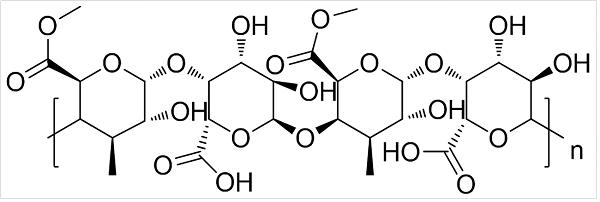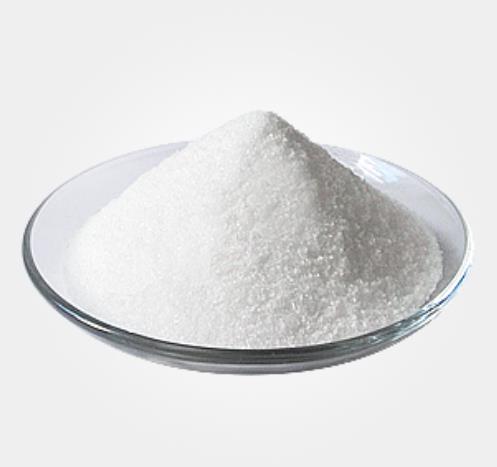The Versatile Pectin: A Sweet Journey Through Nature's Gelatin
Introduction
In the vast world of plant polysaccharides, pectin stands out as a unique and multifaceted molecule, playing a pivotal role in both nature and human industry. This comprehensive review delves into the fascinating world of it, exploring its origins, structure, properties, applications, and even some quirky anecdotes that make this molecule more than just a scientific curiosity. Join us on a sweet journey as we uncover the versatile nature of it, aptly titled "The Sticky Secret of Nature's Gelatin."

The Origins
Pectin is a natural polysaccharide that serves as the backbone of plant cell walls, particularly in fruits and vegetables. Its name derives from the Greek word "pektos," meaning "congealed" or "curdled," reflecting its gel-forming abilities. it is abundant in the primary cell walls of fruits and vegetables, where it plays a crucial role in maintaining structural integrity and regulating cell growth.1

Structural Complexity
Chemically, pectin consists of a linear chain of galacturonic acid molecules, often modified with methyl ester groups. Depending on the degree of methylation, it can be classified as high methoxyl (HM) or low methoxyl (LM). The backbone of it also features numerous side chains, creating regions known as "hairy" or "smooth," which significantly influence its functional properties.2
The Versatility of Pectin
Its unique structure imbues it with a remarkable range of properties, making it an invaluable ingredient in various industries, including food, cosmetics, and pharmaceuticals.
Food Industry
In the food industry, pectin is primarily used as a gelling agent, thickener, and stabilizer. Its ability to form gels under certain conditions makes it ideal for jams, jellies, and marmalades, where it imparts a smooth, elastic texture. Additionally, it enhances the stability and shelf life of dairy products like yogurt and ice cream, acting as a natural emulsifier and stabilizer.
Moreover, it is increasingly being used in the development of low-sugar and sugar-free foods, catering to the growing demand for healthier alternatives. Its natural sweetness and gel-forming properties make it an attractive substitute for traditional sugar-based ingredients.3
Cosmetics and Pharmaceuticals
Beyond food, it finds applications in the cosmetics and pharmaceutical industries. Its film-forming and emulsifying properties make it a valuable ingredient in skin care products, where it helps to retain moisture and improve the overall texture of formulations. In pharmaceuticals, it is used as a binder and coating agent, enhancing the stability and bioavailability of drug formulations.4
Fun Facts and Anecdotes
While its scientific properties are fascinating, its history and cultural significance offer some amusing anecdotes that bring this molecule to life.
The Name Game
The term "pectin" might not sound particularly exciting, but it has an interesting etymological connection. The Latin name for the pubic bone, "os pectineus," stems from its comb-like appearance, sharing the root "pectin" with our polysaccharide of interest. While this connection might seem trivial, it underscores the ubiquitous nature of pectin-like structures in nature.
Cultural References
In popular culture, pectin has found its way into quirky expressions and idioms. For instance, the term "average Joe" refers to an ordinary person, but did you know that "a cup of Joe" is slang for coffee? This expression has its roots in the name of a famous coffee brand, Martinson's Coffee, founded by Joe Martinson. Although not directly related to it, it illustrates the enduring influence of common names and phrases in shaping our language.
The Future
As research continues to unravel the complexities of pectin structure and function, new applications are emerging. Scientists are exploring the potential of modifying it in targeted drug delivery systems, utilizing their unique gel-forming properties to encapsulate and release drugs at specific sites within the body.
Moreover, with the growing consumer interest in sustainable and eco-friendly products, pectin natural origins and biodegradability make it an attractive ingredient for the development of environmentally conscious formulations.5
Conclusion
"The Sticky Secret of Nature's Gelatin" has taken us on a journey through the fascinating world of pectin, uncovering its origins, structural complexity, and versatile applications. From its role in maintaining the structural integrity of plant cell walls to its use as a gelling agent in food and cosmetics, it is a true testament to nature's ingenuity. As research progresses, we can expect to see even more innovative uses for this remarkable polysaccharide, continuing its legacy as a sweet and sticky secret of the natural world.
References:
[1] MOHNEN D. Pectin structure and biosynthesis[J]. Current opinion in plant biology, 2008, 11 3: 233-356. DOI:10.1016/j.pbi.2008.03.006.[2] JUN CHEN. Pectin modifications: a review.[J]. Critical reviews in food science and nutrition, 2015, 55 12. DOI:10.1080/10408398.2012.718722.
[3] WENBO ZHANG H Z Ping Xu. Pectin in cancer therapy: A review[J]. Trends in Food Science & Technology, 2015, 44 2: 131-282. DOI:10.1016/j.tifs.2015.04.001.
[4] ROBERT PALIN A G. The role of pectin in plant morphogenesis[J]. Biosystems, 2012, 109 3: 241-506. DOI:10.1016/j.biosystems.2012.04.006.
Lastest Price from Pectin manufacturers

US $0.00-0.00/kg2025-11-11
- CAS:
- 9000-69-5
- Min. Order:
- 1kg
- Purity:
- 99%
- Supply Ability:
- 1000kg

US $1.00/kg2025-04-21
- CAS:
- 9000-69-5
- Min. Order:
- 1kg
- Purity:
- 99%
- Supply Ability:
- 10 mt


